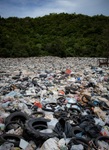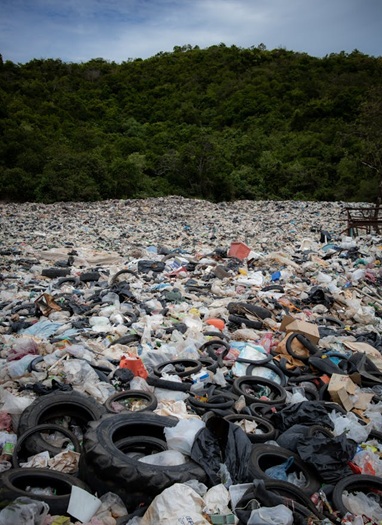Do All Plastics Harm the Environment? Myth Busted

Do All Plastics Harm the Environment? Myth Busted
Ever tossed a plastic bottle in the trash, feeling like you’re dooming the planet? The all plastic harms environment myth claims every piece of plastic is an environmental villain, clogging oceans and killing wildlife. Let’s unravel where this fear came from, why it’s so widespread, and what science says about plastics’ true impact. Join us at omnimyths.com to discover smarter ways to navigate the world of plastic pollution!
The Story Behind the Plastic-Harms Myth
Why do we assume all plastics harm the environment? This myth grew from real concerns mixed with oversimplification.
In the 1970s, as plastic use skyrocketed, images of littered beaches and choked marine life sparked global alarm. Campaigns in the U.S. and Europe, like Greenpeace’s anti-plastic drives, labeled all plastics as harmful, especially single-use items (University of California, Santa Barbara, 2022). From Nairobi to New York, news stories of plastic-filled oceans fueled the plastic pollution myth, but they often ignored differences among plastics. Early environmental science focused on waste, not solutions, creating a blanket fear.
The myth stuck because plastics are everywhere—your coffee cup, phone case, even medical equipment. It’s easy to vilify something so common, especially when headlines scream about “plastic apocalypse.” In places like India, where waste management struggles, the fear feels even more real (National Geographic, 2023).
Why We Fall for the All-Plastic Trap
The all plastic harms environment myth is compelling because it simplifies a complex issue. Who doesn’t want a clear bad guy to blame?
Picture Priya, a student in Mumbai, ditching her plastic water bottle after seeing a viral X post about ocean trash. She’s not alone—people from Sydney to São Paulo feel guilty using plastic straws, thinking every piece is toxic. The myth thrives on emotional images, like turtles trapped in plastic bags, making eco-friendly plastics seem like a fantasy (American Psychological Association, 2023). Our brains love straightforward rules: “plastic bad, avoid it.”
Social media and documentaries, like A Plastic Ocean (2016), amplify this fear, rarely mentioning that not all plastics are equal. This one-size-fits-all narrative makes the plastic environmental impact seem universally dire, even when solutions exist.
Debunking the All Plastic Harms Environment Myth
Not All Plastics Are Harmful
Some plastics, like biodegradable or recyclable types, have a lower environmental footprint. Research shows bioplastics, made from plants like corn, break down faster and emit less carbon than traditional plastics (MIT, 2023). The plastic pollution myth overlooks these greener options.
Recycling Makes a Difference
Properly recycled plastics, like PET (used in water bottles), can be reused multiple times, reducing waste. In 2024, countries like Germany recycled 60% of plastics, showing systems matter more than the material itself (EPA, 2023). Eco-friendly plastics can work when managed well.

Plastics Have Essential Uses
Plastics in medical equipment, like syringes or IV bags, save lives and are tightly regulated to minimize environmental harm. Unlike single-use bags, these plastics are designed for safety and necessity, challenging the plastic environmental impact myth (World Health Organization, 2022).
The Real Issue: Mismanagement
The problem isn’t plastic itself but poor disposal and lack of recycling infrastructure. Studies estimate 80% of ocean plastic comes from developing nations with weak waste systems, not from the material’s inherent “evil” (National Geographic, 2023).
The Real Cost of Blanket Plastic Bans
Imagine Carlos, a small-business owner in Brazil, switching from plastic to paper packaging to “save the planet.” His costs skyrocket, and paper production harms forests, showing that blanket plastic bans aren’t always eco-friendly. This story plays out globally—restaurants in Canada or shops in Kenya face similar trade-offs, falling for the plastic pollution myth (The Conversation, 2024).
Avoiding all plastics can also limit access to affordable goods. In rural Africa, plastic containers safely store food and water, improving health. Demonizing all plastics ignores these benefits and pushes less sustainable alternatives, like heavy glass or metal (World Bank, 2023).
How to Make Smarter Plastic Choices
Choose Sustainable Plastics
- Opt for recyclable types: Look for PET or HDPE labels, common in bottles and jugs.
- Try bioplastics: Seek products labeled as compostable or plant-based.
- Avoid single-use: Skip straws or bags when possible.
Boost Recycling Habits
- Rinse and sort: Clean plastics before recycling to ensure they’re processed.
- Check local rules: Follow your area’s recycling guidelines, like those in the U.S. or Australia.
- Support systems: Advocate for better waste management in your community (EPA, 2023).
Balance Necessity and Impact
- Keep essentials: Use plastics for critical needs, like medical or food safety.
- Reduce waste: Buy in bulk to cut packaging.
These tips align with a heart health diet by prioritizing sustainable choices (National Geographic, 2023).
Real-Life Wins from Smart Plastic Use
Take Emma, a café owner in London, who switched to compostable cups made from plant-based plastics. Her business cut waste by 30% without losing customers, showing eco-friendly plastics work. Or consider Ravi, a farmer in India, who uses recycled plastic containers to store crops safely, boosting his income. These stories prove that smart plastic choices beat the all plastic harms environment myth (Forbes, 2025).
Conclusion
The all plastic harms environment myth paints a simplistic picture, but science shows not all plastics are bad—mismanagement is the real issue. From recyclable PET to life-saving medical plastics, the right choices can reduce harm. Ditch the guilt and embrace sustainable habits! Explore more environmental myths at omnimyths.com!
Frequently Asked Questions
Q: Why do people think all plastics harm the environment?
A: The all plastic harms environment myth grew from 1970s campaigns and images of ocean trash, but not all plastics are harmful when managed well (UC Santa Barbara, 2022).
Q: Are any plastics eco-friendly?
A: Yes, recyclable plastics like PET and bioplastics from plants have lower impacts, debunking plastic pollution myths with proper use (MIT, 2023).
Q: How does plastic mismanagement hurt the environment?
A: Poor disposal, especially in developing nations, leads to 80% of ocean plastic, not the material itself, countering plastic environmental impact fears (National Geographic, 2023).
Q: What’s the difference between regular and biodegradable plastics?
A: Biodegradable plastics break down faster, often from plant materials, reducing waste compared to traditional plastics, supporting eco-friendly plastics (EPA, 2023).
Q: How can I reduce plastic harm?
A: Recycle properly, choose bioplastics, and avoid single-use items to minimize plastic pollution, per practical tips (World Bank, 2023).
Q: Why is the plastic myth so widespread?
A: Emotional images and simple narratives, like ocean trash, make plastic pollution myths stick globally, from the U.S. to Asia (Forbes, 2025).